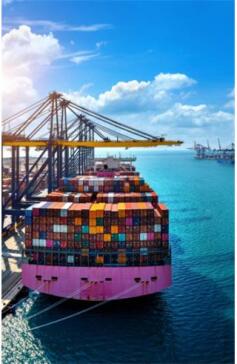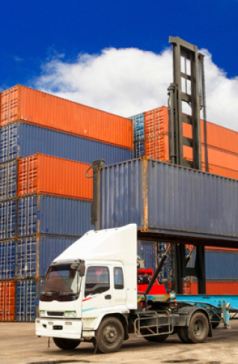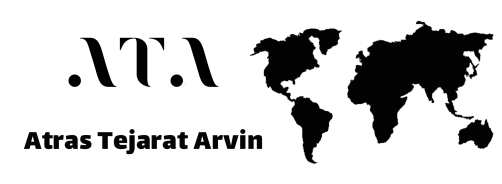

In general, the transfer and shipment of goods from one territory to another is called the export of goods. Export plays a crucial role in economic development, and understanding international regulations as well as the domestic laws of the importing countries is essential and necessary.
Gozdarazi Trading Company will accompany you through the entire export process, saving you time and ensuring that your export-related tasks are handled smoothly.
Click the link for information on importing goods by the professional team at Gozdarazi.
Types of Exportable Goods
Exportable goods are classified into three categories based on their licensing requirements:
Permitted goods: These are goods that, while complying with relevant laws, do not require a license to go through customs export procedures. Examples include goods with human health certificates, livestock and plant health standards, etc.
Conditional goods: Goods that require a license from customs for export are considered conditional. After the relevant ministries approve them and the Ministry of Commerce notifies customs, export is possible. However, exporters do not need to apply directly to the ministries.
Prohibited goods: These are goods that are banned from export in a country due to specific reasons or legal rulings. Their export is not allowed under any circumstances.
At Gozdarazi Trading, we strive to handle all export-related procedures under customs regulations at the lowest possible cost.
Types of Export
Exports are classified into different types, including:
Definitive (Final) Export
In this type, goods are exported out of the customs territory of the country for sale or consumption, and the exporter is exempt from paying customs duties, commercial profits, taxes, and other charges.
Temporary Export
This refers to goods exported for purposes like participating in international exhibitions. If unsold, the goods can be returned to the original customs point. No import procedures are required for returning these goods. However, exporters must deposit a refundable security amount with customs, which is returned upon re-entry.
Direct Export
When an individual or a company exports goods directly without intermediaries, it’s called direct export. All export responsibilities are handled by the exporter themselves.
Advantages:
Higher profit margins (no intermediaries to share profits with)
Direct commercial relationships with international and domestic partners
Full learning experience of the export process
Challenges:
Requires an export department and hiring staff
Costs related to presence in the target country
Longer processing time
Indirect Export
In indirect export, intermediaries like trading companies handle the export process.
Advantages:
Lower export costs
Benefit from the experience of seasoned professionals
Disadvantages:
Less control over pricing
No direct contact with customers
Reduced profit margins
Don’t worry — with our up-to-date knowledge of indirect export laws, we help you navigate common export challenges effectively.
Export Process Steps
The export process is divided into several major stages. Gozdarazi Trading will be by your side through every one of them:
1. Strategy Development
First, all aspects of the export operation must be evaluated, including:
Market needs
Cultural considerations in target countries
Product pricing
Export laws and regulations
If you’re looking to run a profitable business without paying excessive, overwhelming, or illegal costs, we recommend getting in touch with us at ATA Trading Group.
Thanks to our extensive experience and wide network of connections, we are able to legally export any eligible product to various countries on your behalf — smoothly, efficiently, and with peace of mind.
Market Needs Assessment
To choose the right market for your export product, you must thoroughly analyze the sales potential of your product in various countries.
Export Marketing
Selling goods in foreign markets requires familiarity with various marketing and advertising strategies.
Understanding the Export Process
Usually, in the export process, the exporter (individual or company) must obtain the following documents:
A valid Commercial Card (Business License) issued in the name of the exporter
Invoice or Proforma Invoice
Packing List
Customs Declaration Form
Bill of Lading (B/L)
Certificate of Origin
And more…
Commercial Card: For any type of international trade activity, you need a commercial card in your area of operation. So, make sure to obtain it from the relevant authority before starting the customs process.
Proforma Invoice: Once the target country is selected, the exporter must provide a proforma invoice including price, quantity, and other details to the buyer.
Export Contract: After issuing the proforma, a legal bilateral export contract must be signed between the exporter and the buyer.
Customs Procedures: All customs-related actions must be handled by the exporter. These include customs valuation, contracting for transport and insurance, obtaining inspection certificates, issuing the commercial invoice and certificate of origin, and finally, dispatching goods from the origin to the destination country.
Payment Transfer: Payment in exports is usually conducted through banking systems, letters of credit (L/C), or licensed exchange companies.
Export Goods Declaration
To fill out an export declaration, the following information must be provided:
Buyer’s information
Country of origin
Destination country
Exporter’s details
Declarant’s details
Terms of the deal according to the contract
Information about the means of transport at the port of loading
Product details including type, quantity, weight, customs tariff code, value, and documentation
Package details including number, type, markings, net and gross weight
Name of the customs office, and registration number of the declaration
Exporting Goods from Iran
Trade with neighboring countries is often among the most profitable forms of international trade, as proximity reduces transportation costs. This has made Iran’s neighboring countries key destinations for Iranian exports.
Countries such as UAE (Dubai), Turkey, Oman, Kuwait, Iraq, and Russia account for a significant share of Iran’s annual exports. Exports are carried out via land routes, air freight, seaports, free trade zones, etc.
For example, because of the short distance between Iranian ports and Iraq, the main exports to Iraq are perishable goods like fruits and vegetables. These reach the destination quickly and without spoilage.
Major exports to Russia include:
Fresh fruits
Vegetables
Herbs and greens
Spices
Dried fruits
Medicinal herbs
According to Iranian customs data, top exports to Oman include:
Fossil fuels
Live animals
Ceramic products
Minerals like salt, sulfur, gypsum, and cement
Agricultural products
Tobacco products
And more…


















